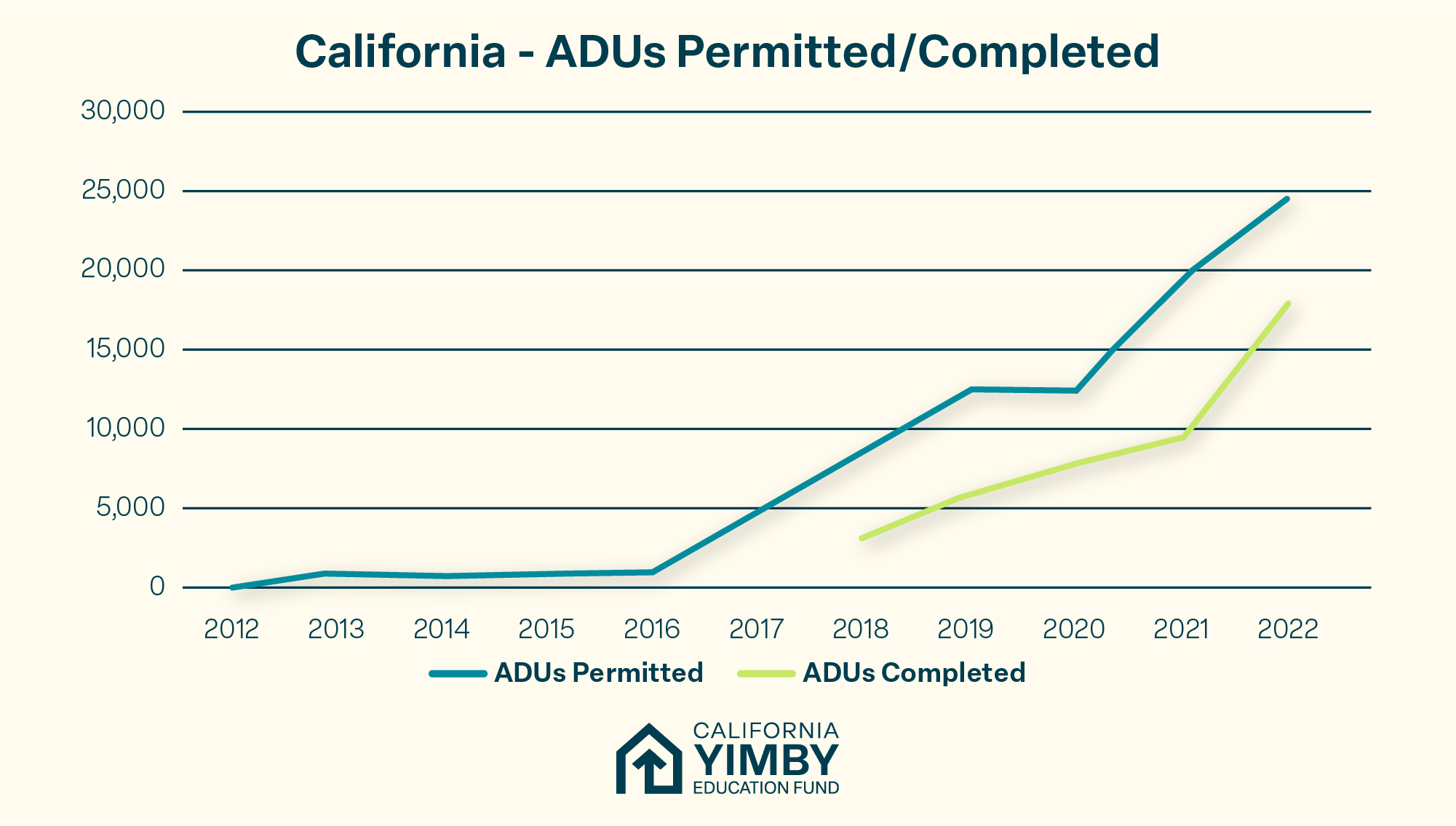New Report Highlights Success of Policies Legalizing More Homes
Legislation Streamlining “Accessory Dwelling Units” Holds Lessons for Housing Abundance
“A 15,000% increase in housing is a meaningful impact”
SACRAMENTO – The California YIMBY Education Fund today released a new report showing the cumulative impact of laws that have made it faster, cheaper, and easier for California homeowners to build “accessory dwelling units” (ADUs, also known as “Granny Flats). The upshot: Since the ADU reform agenda took hold in Sacramento in 2016, the number of ADUs permitted each year in California increased by 15,334% – resulting in 83,865 permitted ADUs statewide.
The findings provide clear evidence that housing policy reform in Sacramento can result in the rapid development of new homes that are affordable to middle-income Californians.
“The momentum behind accessory dwelling units in California is proof that there are many approaches we can take to solve the housing shortage and affordability crisis,” said State Assemblymember Juan Carrillo of Palmdale. “I was proud to author AB 1332, which makes it faster and easier for homeowners to get approvals for ADUs, and builds on this momentum.”
“We wanted to look back across seven years of successive policy reforms that focused on incentivizing ADUs,” said California YIMBY Education Fund Research Director M. Nolan Gray. “What we found was striking. A 15,000% increase in the production of ADUs, with most of them affordable to middle-income earners, is a material and meaningful impact.”

The report, “California ADU Reform: A Retrospective,” walks through the series of new laws passed by the State Legislature between 2016 and 2023 that removed barriers to ADU production put in place by California cities; in most cases, the pent up demand for ADUs – kept in check by local regulations that made it difficult or impossible to build them – was more than sufficient to lead to an ADU construction boom.
Overall, the findings suggest that the biggest barriers to housing production in California are often local laws passed at the City or County level that are designed to slow or prohibit the construction of new housing – and that State lawmakers can overcome these barriers with targeted reforms. While ADUs have proven popular among homeowners looking for more flexible housing options, Gray noted that lawmakers can apply similar standards to other types of housing, such as multi-family apartments and infill housing in urban areas, and achieve similar results.
“It may be that ADUs are a special category of housing, since they can be built by individual homeowners and are smaller and simpler than large housing developments,” Gray said. “But the principle is likely to hold true: If we loosen the severe restrictions on production of other housing typologies in California, we are likely to see similar results.”